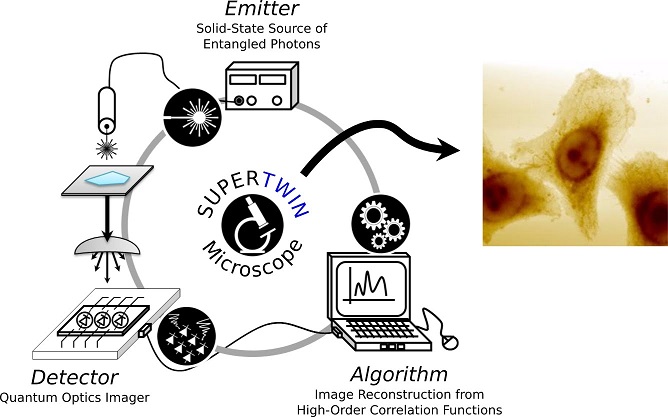Imaging beyond the Rayleigh limit

Related topics
Innovation Excellent Science Future and emerging technologies EU countries Non-EU countries FET OpenIt is expected that resolution of SUPERTWIN quantum microscope will be N times better than a classical optical microscope, where N is the order of entanglements, i.e. the number of twins. The achievement of such an ambitious goal requires breakthroughs in the realisation of a highly efficient solid-state source of 5th-order entangled photons, a high-resolution single-photon camera with cross-correlation capabilities, and effective algorithms for the image reconstruction from the detected scattered photons.
The SUPERTWIN project is already on its way towards the objectives, having achieved, after the first year, successful super resolution results with experimental detection of 2nd-order entangled photons, while detection of momentum-entangled photons has been proved with a CMOS single-photon detector.
Funded under FET Open , SUPERTWIN is a collaborative research project that brings together people from industries, research centers and universities across Europe. For more information on the project's consortium, objectives and achievements, please read here.
